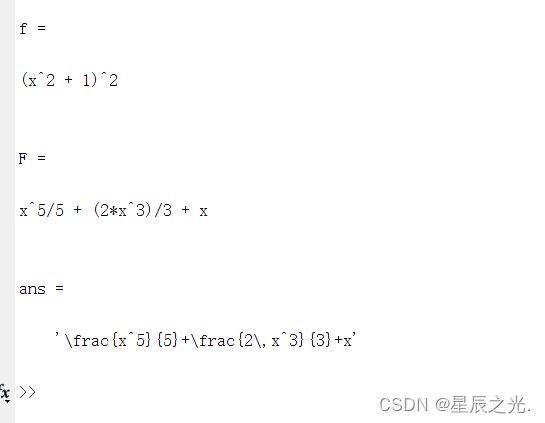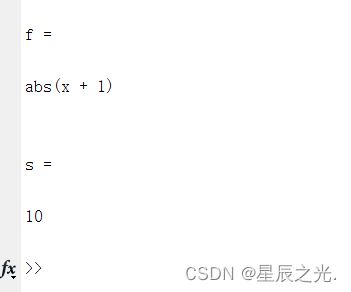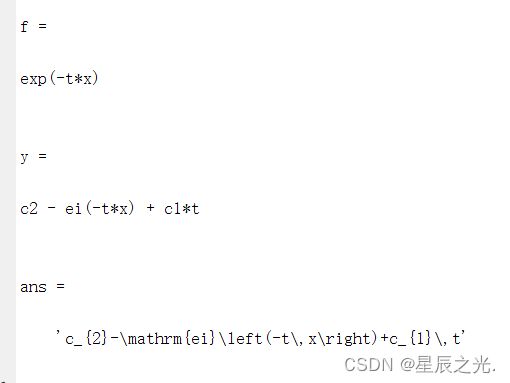【Matlab】求解积分问题
求解积分问题
- 不定积分
-
- inf函数调用
- 实例1
- 实例2
- 定积分与无穷积分
-
- 实例1
- 实例2
- 多重积分
不定积分
inf函数调用
F=inf(fun,x)
fun是被积函数,是自变量, 当然如果只有一个自变量可以省略。
实例1
f = ( x 2 + 1 ) 2 f = {\left( {{x^2} + 1} \right)^2} f=(x2+1)2
%不定积分
clear all
clc
syms x
f=(1+x^2)^2
F=int(f)
latex(F) %转换为latex代码
返回结果:

x 5 5 + 2 x 3 3 + x \frac{x^5}{5}+\frac{2\,x^3}{3}+x 5x5+32x3+x
实例2
解关于t的不定积分
f = − t x x 2 − 1 f = - \frac{{t{\kern 1pt} x}}{{{x^2} - 1}} f=−x2−1tx
%不定积分2
clear all
clc
syms x t
f=(x*t)/(1-x^2)
F=int(f,t)
latex(F) %转换为latex代码
返回结果:

− t 2 x 2 ( x 2 − 1 ) -\frac{t^2\,x}{2\,\left(x^2-1\right)} −2(x2−1)t2x
定积分与无穷积分
这里仍然可以调用int函数
s = i n t ( f , x , a , b ) s=int(f,x,a,b) s=int(f,x,a,b)
x为自变量,(a,b)为定积分的积分区间,求解无穷积分时,可以将a, b设置为int和-inf.
实例1
求解下列函数再(3, 5)区间的积分
f = ∣ x + 1 ∣ f=\left| {x + 1} \right| f=∣x+1∣
%定积分
clear all
clc
syms x
f=abs(1+x)
s=int(f,x,3,5)
实例2
区间仍为(3,5)
f = x 4 ( x + 1 ) 12 f = \frac{{{x^4}}}{{{{\left( {x + 1} \right)}^{12}}}} f=(x+1)12x4
%定积分2
clear all
clc
syms x
f=x^4/(1+x)^12
s=int(f,x,3,5);
double(s)%转换为double更好看,美观
多重积分
先对t积分再对x积分
%多重积分
clear all
clc
syms t x c1 c2
f=exp(-t*x)
y=int(int(f,x)+c1,t)+c2
latex(y) %转换为latex代码
f = e − t x f=e^{-t {\kern 1pt} x} f=e−tx
c 2 − e i ( − t x ) + c 1 x c_{2}-\mathrm{ei}\left(-t\,x\right)+c_{1}\,x c2−ei(−tx)+c1x


